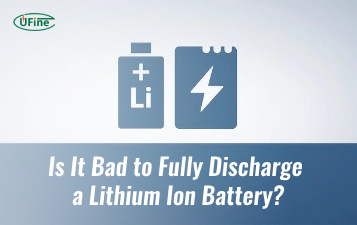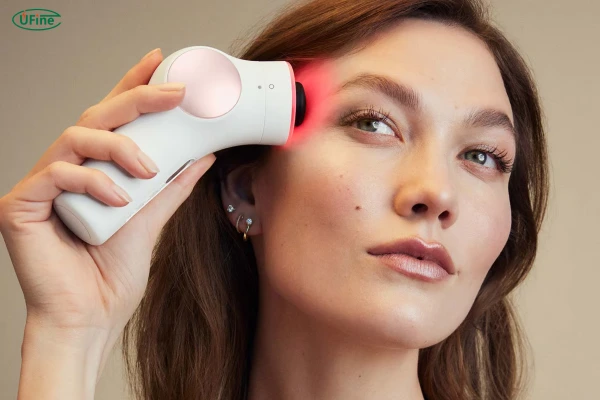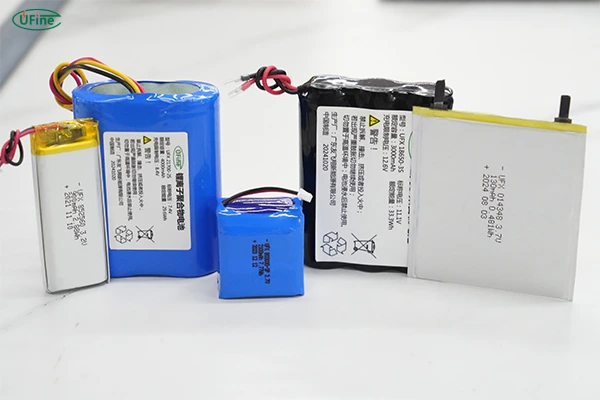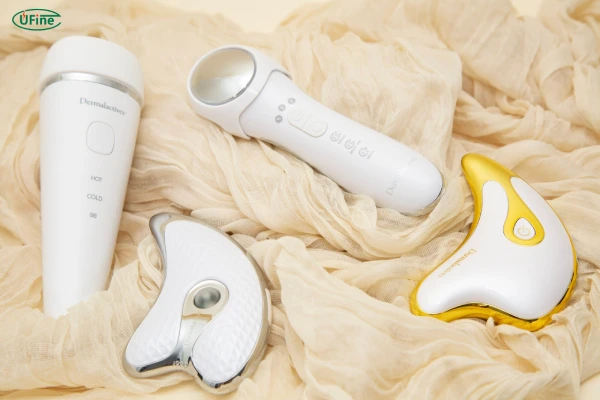
- Part 1. Why are microcurrent devices batteries so important?
- Part 2. Common types of batteries used in microcurrent devices
- Part 3. Lithium-ion batteries: The gold standard for microcurrent devices
- Part 4. Nickel-metal hydride (NiMH) batteries in microcurrent tools
- Part 5. Alkaline batteries: Are they suitable for microcurrent devices?
- Part 6. Rechargeable vs. non-rechargeable: Which is better?
- Part 7. Battery Life and longevity
- Part 8. The details that matter
- Part 9. Custom batteries: The secret to better design and better results
- Part 10. Built-in vs. replaceable batteries
- Part 11. How battery quality enhances the entire experience
- Part 12. Battery safety
- Part 13. Extend battery life
- Part 12. Final words
Microcurrent devices have gained popularity in skincare, physical therapy, and wellness applications due to their ability to deliver low-level electrical currents for facial toning, pain relief, and muscle stimulation. A critical yet often overlooked component of these devices is the battery, which powers the microcurrent technology.
Choosing the right microcurrent device battery ensures optimal performance, safety, and longevity. In this guide, we’ll explore the different types of batteries used in microcurrent devices, their pros and cons, and how to select the best one for your needs.
Part 1. Why are microcurrent devices batteries so important?
Microcurrent devices emit gentle electrical pulses (typically below 1,000 microamps) to stimulate skin cells, muscles, or nerves. Since these devices require stable, long-lasting, and safe power, the battery choice is crucial.
Key considerations for microcurrent device batteries include:
- Voltage stability (to ensure consistent current flow)
- Longevity (to avoid frequent replacements)
- Rechargeability (for cost-efficiency and sustainability)
- Safety (to prevent overheating or leakage)
Next, we’ll examine the most common battery types used in these devices.
Part 2. Common types of batteries used in microcurrent devices
Microcurrent devices typically use one of the following battery types:
- Lithium-ion (Li-ion) batteries (most common in high-end devices)
- Nickel-Metal Hydride (NiMH) batteries (found in some older or budget models)
- Alkaline batteries (rare, due to inconsistent power output)
Each type has unique advantages and limitations.
Part 3. Lithium-ion batteries: The gold standard for microcurrent devices
Most premium microcurrent devices, such as NuFACE, FOREO, and Ziip, rely on lithium-ion (Li-ion) batteries. Here’s why:
- High energy density – More power in a compact size.
- Rechargeable – Cost-effective and eco-friendly.
- Stable voltage – Ensures consistent microcurrent delivery.
- Long lifespan – Can last 300-500+ charge cycles.
Many manufacturers prefer custom lithium polymer (LiPo) batteries for their slim, lightweight design—perfect for portable microcurrent tools.
Ufine Battery: Your Trusted Lithium Battery Supplier
Looking for high-quality custom lithium batteries for your microcurrent device? Ufine Battery specializes in:
- Lithium polymer (LiPo) batteries – Ultra-thin, flexible sizes
- LiFePO4 batteries – Safe, long-lasting power
- 18650 & cylindrical batteries – Reliable and high-capacity
- High-rate & extreme-temperature batteries – For specialized applications
We offer custom battery solutions with different sizes, voltages, capacities, and discharge rates. Contact Ufine Battery today for a tailored power solution!
Part 4. Nickel-metal hydride (NiMH) batteries in microcurrent tools
While less common today, some older microcurrent devices use NiMH batteries.
✔ Pros:
- Rechargeable
- More affordable than Li-ion
❌ Cons:
- Lower energy density (bulkier)
- Faster self-discharge (lose charge when unused)
- Shorter lifespan (~200-300 cycles)
NiMH batteries are being phased out in favor of lithium-based alternatives.
Part 5. Alkaline batteries: Are they suitable for microcurrent devices?
Some low-cost microcurrent devices may use alkaline batteries, but they are not ideal because:
- Voltage drops over time, leading to inconsistent microcurrent output.
- Non-rechargeable, increasing long-term costs.
- Risk of leakage, which can damage the device.
For best performance, rechargeable lithium batteries are strongly recommended.
Part 6. Rechargeable vs. non-rechargeable: Which is better?
Feature Rechargeable (Li-ion/NiMH) Non-Rechargeable (Alkaline) Cost Over Time Cheaper long-term More expensive (frequent replacements) Performance Stable voltage Declining power output Eco-Friendly Yes (reusable) No (single-use)
Verdict: Rechargeable lithium batteries are the best choice for microcurrent devices.
Part 7. Battery Life and longevity
To maximize your microcurrent device’s battery life:
- Avoid deep discharges (recharge before fully draining).
- Store at 40-60% charge if unused for long periods.
- Use the correct charger to prevent overcharging.
Quality Li-ion batteries (like those from Ufine Battery) can last 2-5 years with proper care.
Part 8. The details that matter
If you’re designing or upgrading a microcurrent device, here’s what to consider in a battery:
- Voltage (usually 3.7V): Must be stable to avoid power dips.
- Capacity (e.g. 500mAh – 1500mAh): Affects how long the device lasts per charge.
- Discharge Rate (C-rate): Needs to support steady low-level current, without spikes.
- Protection Circuit (PCM/BMS): Prevents overcharge, over-discharge, and short-circuit.
- Cycle Life: At least 300–500 charge cycles for a quality user experience.
Ufine Battery offers all of these specs as customizable options to fit each project’s needs.
Part 9. Custom batteries: The secret to better design and better results
No two devices are the same. That’s why cookie-cutter batteries don’t always work.
More brands are turning to custom battery solutions—and for good reason:
- Tailored to device shape and space constraints
- Optimized energy output and longevity
- Designed with built-in safety and smart charging systems
Ufine Battery offers extensive customization:
From high-temperature batteries to high-rate lithium packs, their engineering team works with you to design the perfect battery for your microcurrent product.
Part 10. Built-in vs. replaceable batteries
- Built-in batteries: Rechargeable, sealed, sleek. Most popular today. Downside? Once the battery degrades, the device must be serviced or replaced.
- Replaceable batteries: Easier to swap out. But bulkier and more prone to user error or moisture damage.
For compact, waterproof beauty tools, built-in LiPo batteries remain the top choice.
Part 11. How battery quality enhances the entire experience
When the battery is well-chosen:
- You get smoother, uninterrupted treatments.
- Your device runs cooler and quieter.
- You feel more confident using it on your face or body.
- Your device lasts longer and builds brand trust.
Battery performance translates directly into user satisfaction—and that’s something no brand can afford to ignore.
Part 12. Battery safety
Look for batteries that meet international safety standards:
- UL: North American safety approval
- CE: European compliance
- RoHS: Non-toxic, environmentally safe
- UN38.3: For safe air/sea transport of lithium batteries
Ufine Battery ensures its products meet these certifications, giving brands and users peace of mind—no compromises.
Part 13. Extend battery life
For users:
- Don’t overcharge—unplug once it hits 100%.
- Store in a cool, dry place.
- Use only recommended chargers.
- Recharge before it drops to 0%.
For developers:
- Integrate smart charging circuits.
- Add low-battery warnings and auto-shutdown.
- Design for thermal ventilation.
Longer battery life means happier customers—and fewer returns.
Part 12. Final words
The best microcurrent device battery is typically a rechargeable lithium-ion (Li-ion or LiPo) battery due to its efficiency, longevity, and safety.
For custom battery solutions, trust Ufine Battery—a leading manufacturer of high-performance lithium batteries. Whether you need ultra-thin, high-rate, or extreme-temperature batteries, we provide tailored power solutions for your microcurrent devices.
Related Tags:
More Articles

Is It Bad to Fully Discharge a Lithium Ion Battery?
Discover what happens if a lithium battery is fully discharged and how to safely recharge 12V batteries to prevent permanent damage.
Does a Higher mAh Battery Last Longer?
Does a higher mAh battery really last longer? Learn what mAh means, real battery life in hours, replacement safety (4000 vs 5000mAh), and real examples.
Exploring the Lithium Ion Battery Fire Temperature
Discover the lithium-ion battery fire temperature and learn how to stay safe. Get essential tips to prevent battery fires and protect your devices today.
The Ultimate Guide to 6s Lipo Batteries
A beginner-friendly guide to 6S LiPo batteries. Understand voltage, capacity, charging tips, safety rules, and real-world applications.
What is the NCMA battery? What is the difference between it and the NMC battery? Which one is better? This article will answer your questions.





